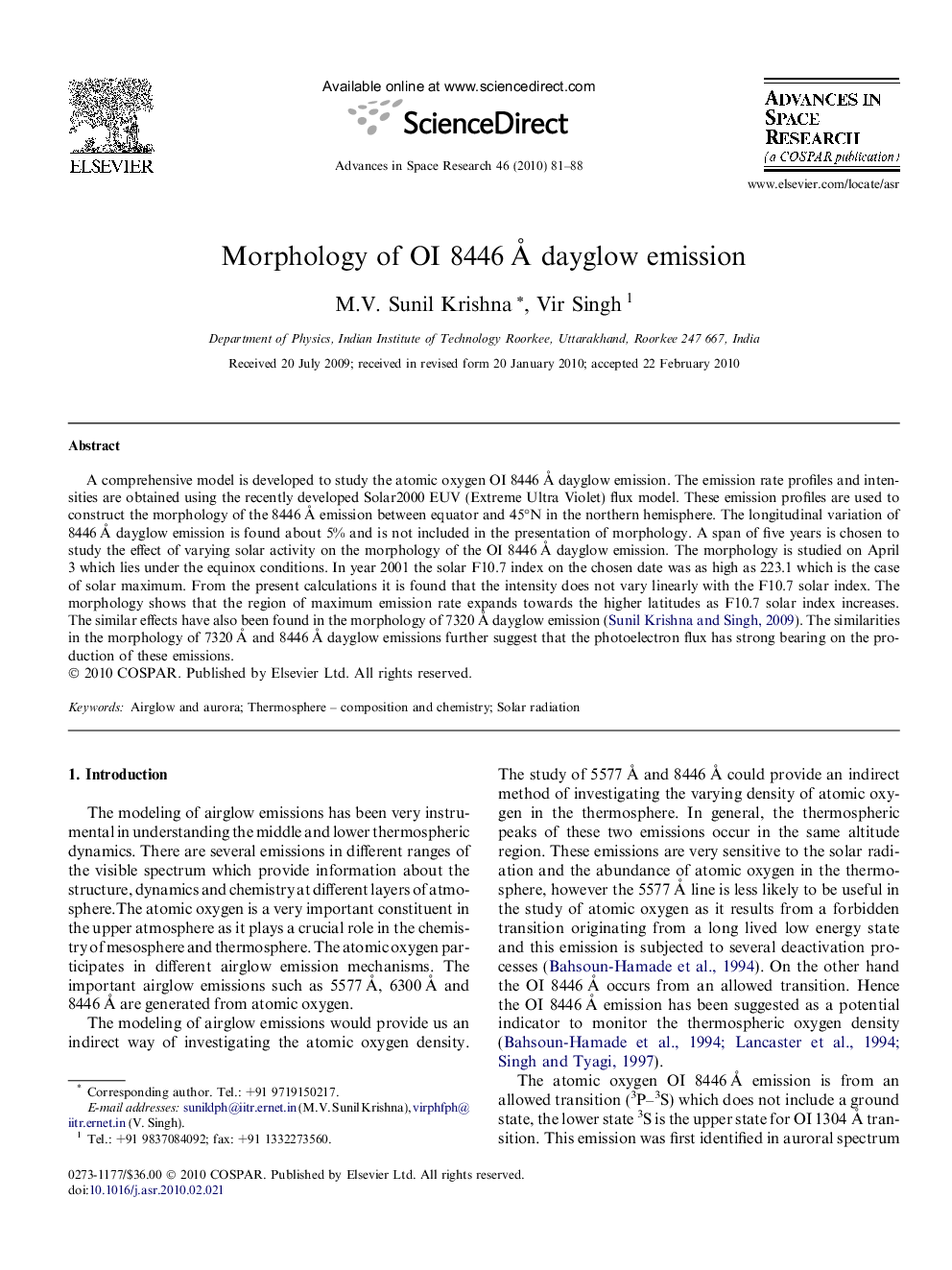| Article ID | Journal | Published Year | Pages | File Type |
|---|---|---|---|---|
| 1767372 | Advances in Space Research | 2010 | 8 Pages |
Abstract
A comprehensive model is developed to study the atomic oxygen OI 8446Â Ã
dayglow emission. The emission rate profiles and intensities are obtained using the recently developed Solar2000 EUV (Extreme Ultra Violet) flux model. These emission profiles are used to construct the morphology of the 8446Â Ã
emission between equator and 45°N in the northern hemisphere. The longitudinal variation of 8446 Ã
dayglow emission is found about 5% and is not included in the presentation of morphology. A span of five years is chosen to study the effect of varying solar activity on the morphology of the OI 8446Â Ã
dayglow emission. The morphology is studied on April 3 which lies under the equinox conditions. In year 2001 the solar F10.7 index on the chosen date was as high as 223.1 which is the case of solar maximum. From the present calculations it is found that the intensity does not vary linearly with the F10.7 solar index. The morphology shows that the region of maximum emission rate expands towards the higher latitudes as F10.7 solar index increases. The similar effects have also been found in the morphology of 7320Â Ã
dayglow emission (Sunil Krishna and Singh, 2009). The similarities in the morphology of 7320Â Ã
and 8446Â Ã
dayglow emissions further suggest that the photoelectron flux has strong bearing on the production of these emissions.
Keywords
Related Topics
Physical Sciences and Engineering
Earth and Planetary Sciences
Space and Planetary Science
Authors
M.V. Sunil Krishna, Vir Singh,
